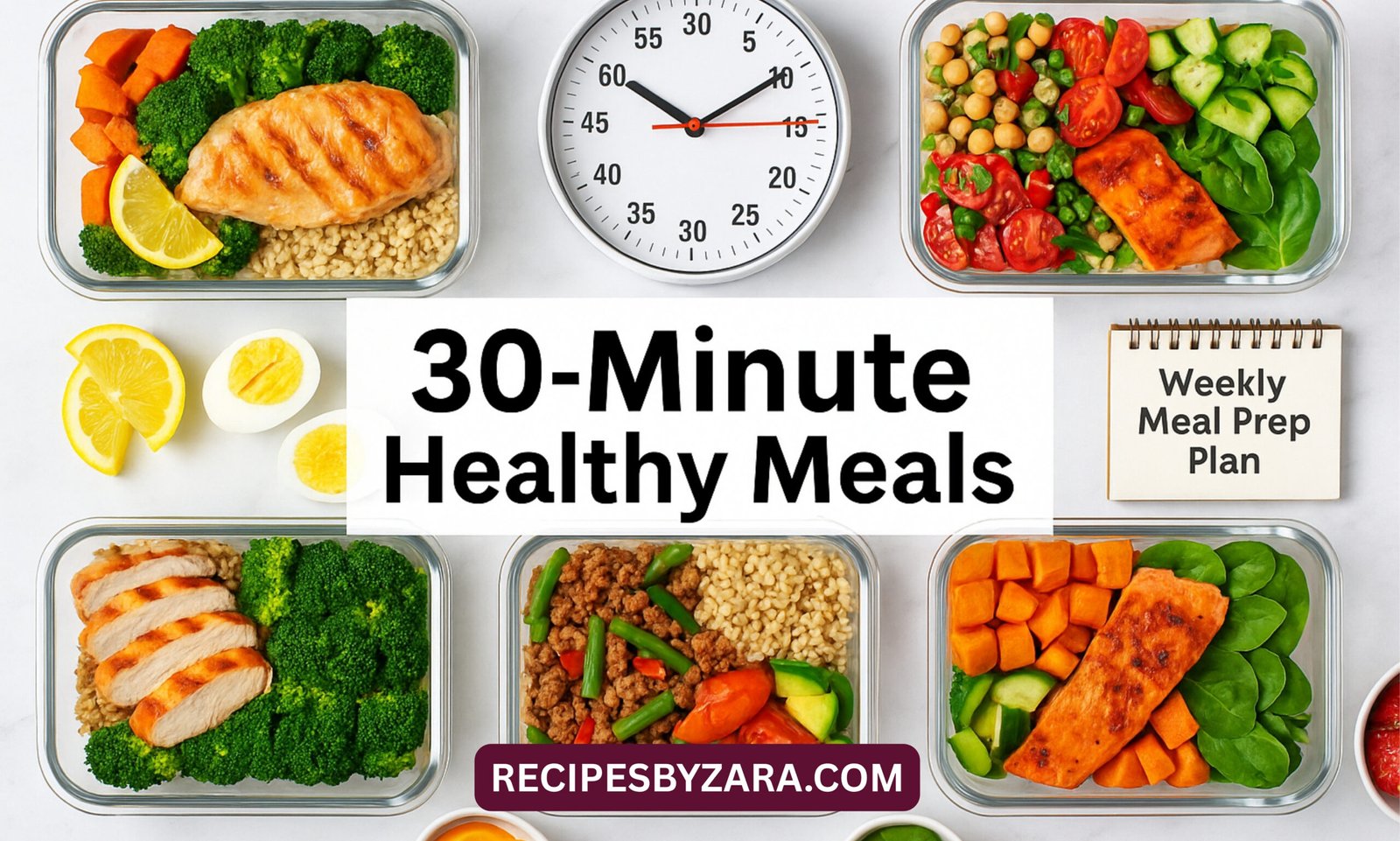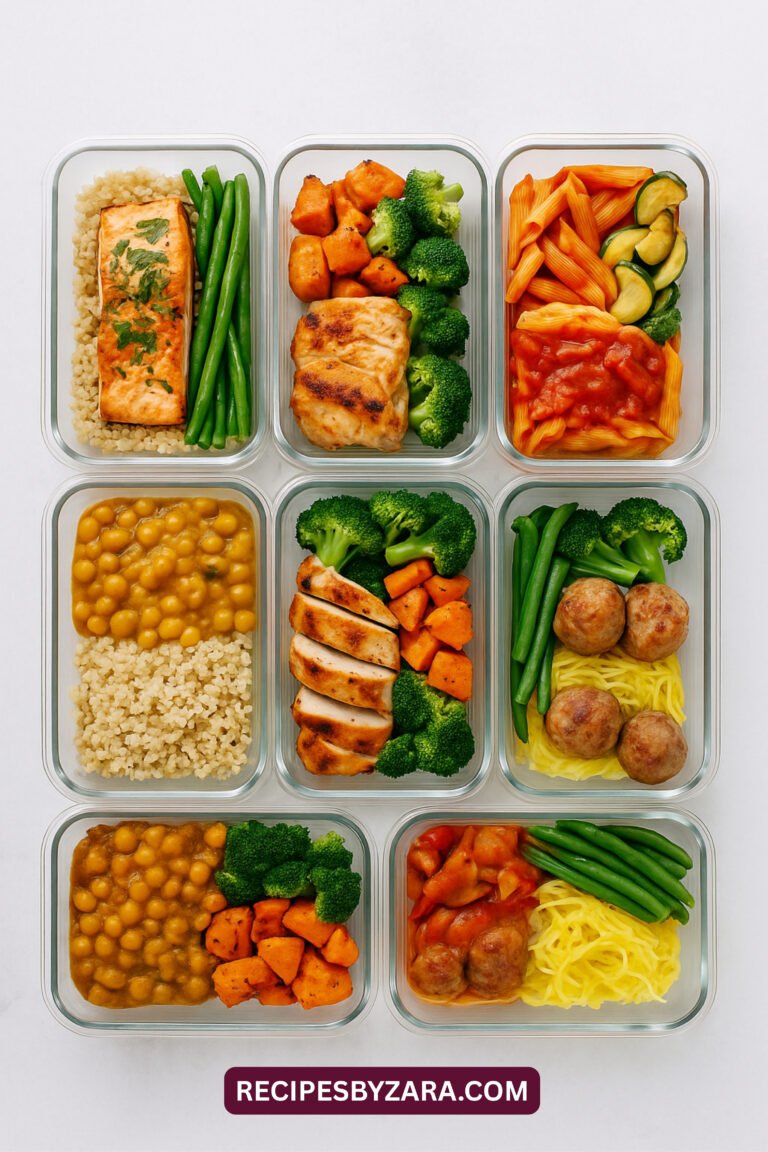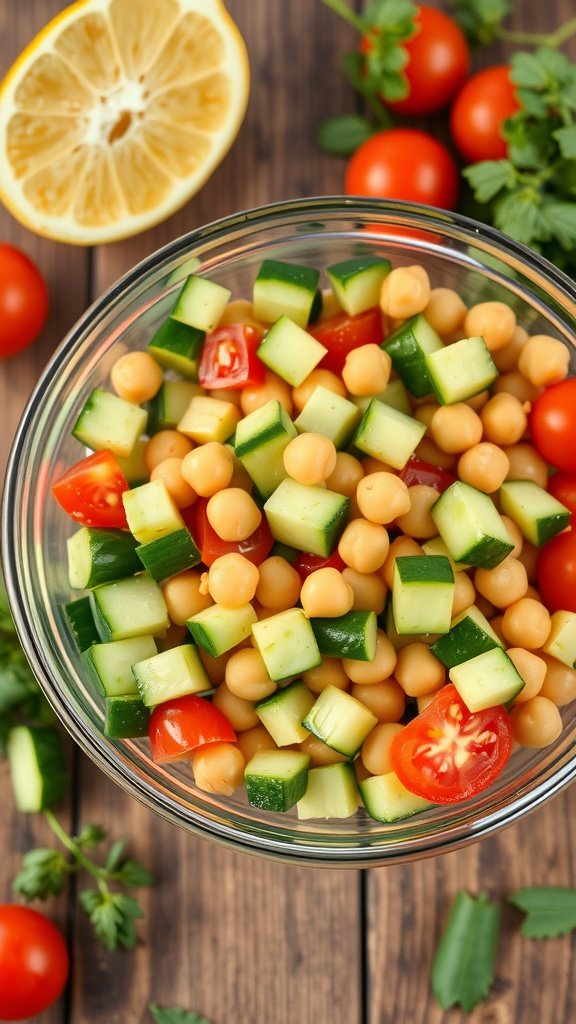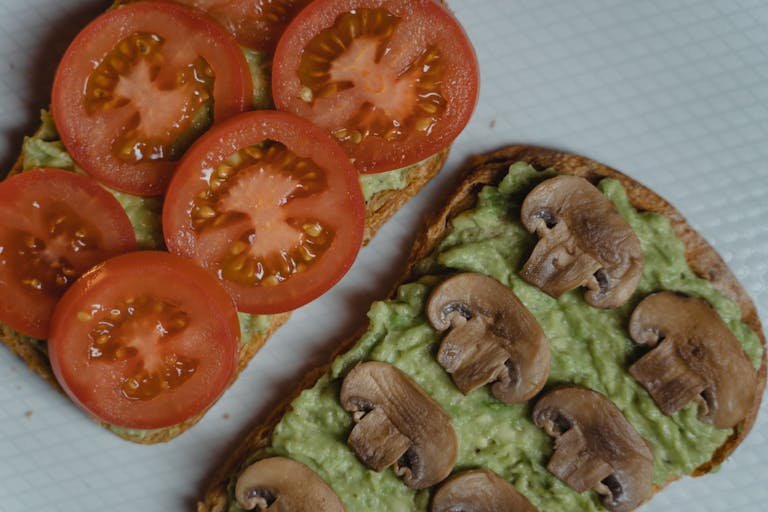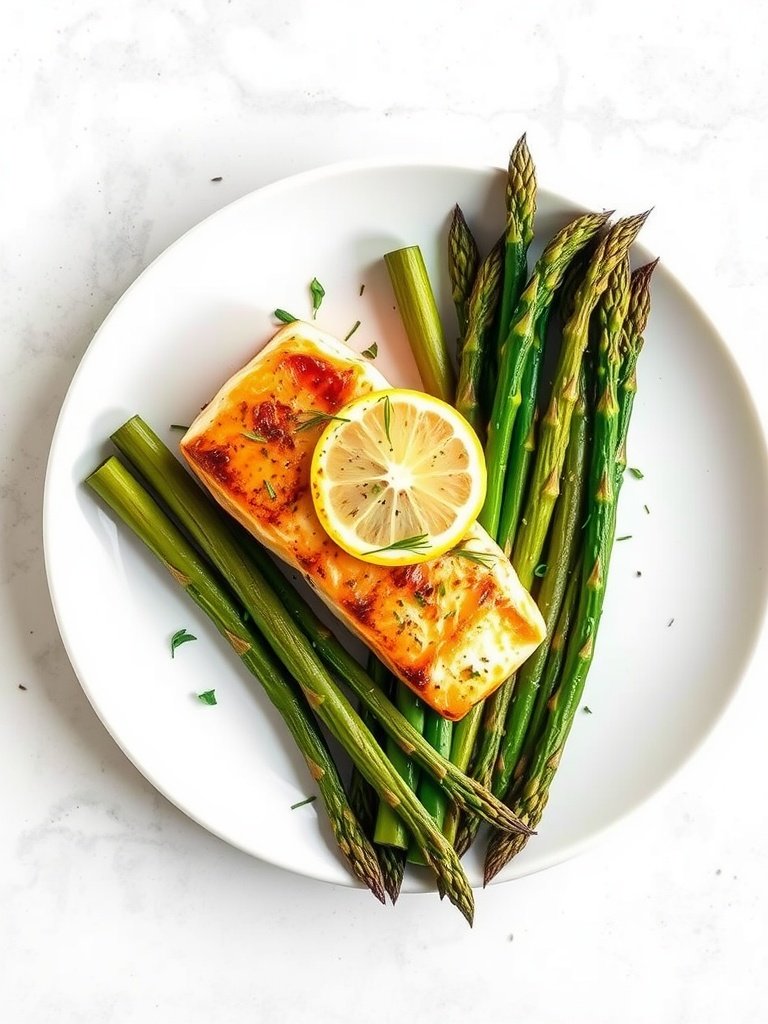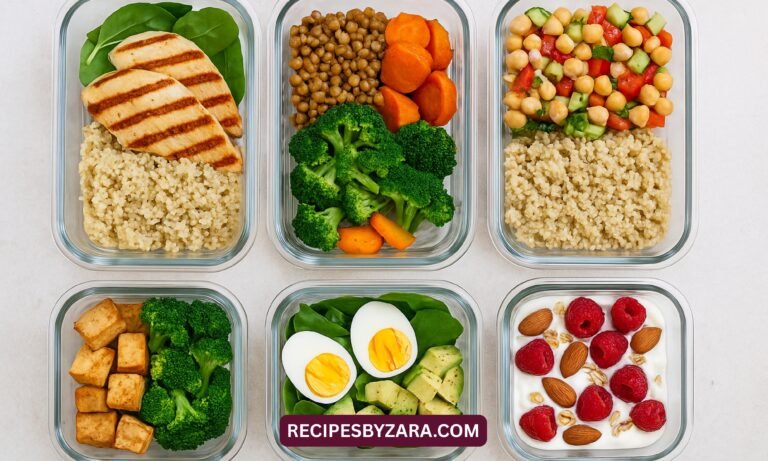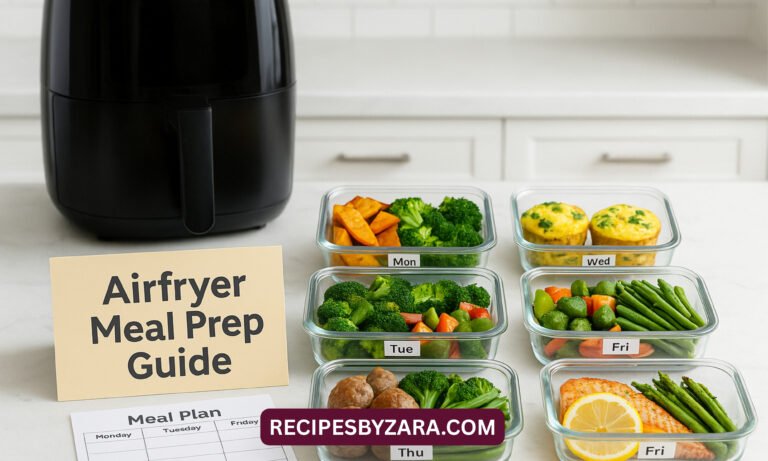30-Minute Healthy Meal Prep Recipes That Actually Work
30-minute healthy meal prep recipes that actually work to help you stay on track with your diet and save time. These easy, nutritious meals are perfect for busy people who want clean eating without the stress.
In today’s fast-paced world, finding time to eat well can feel impossible. Between work, family, and everyday responsibilities, cooking healthy meals often falls to the bottom of the priority list. That’s why 30-minute healthy meal prep recipes that actually work are such a game changer.
These recipes eliminate the daily guesswork around food. With just half an hour, you can prepare a variety of meals that fuel your body and fit your lifestyle. Whether you’re aiming for weight loss, more energy, or simply fewer takeout orders, quick prep meals make healthy living more accessible.
Not all quick meals are nutritious, and not all healthy meals are quick. This guide is crafted to strike the perfect balance offering easy meal prep ideas that are rich in nutrients, easy to store, and satisfying to eat. From balanced meal prep bowls to clean eating meal prep options, you’ll get everything you need to simplify your weekly routine.
1. What Makes a Meal Prep Recipe “Healthy” and “Effective”?
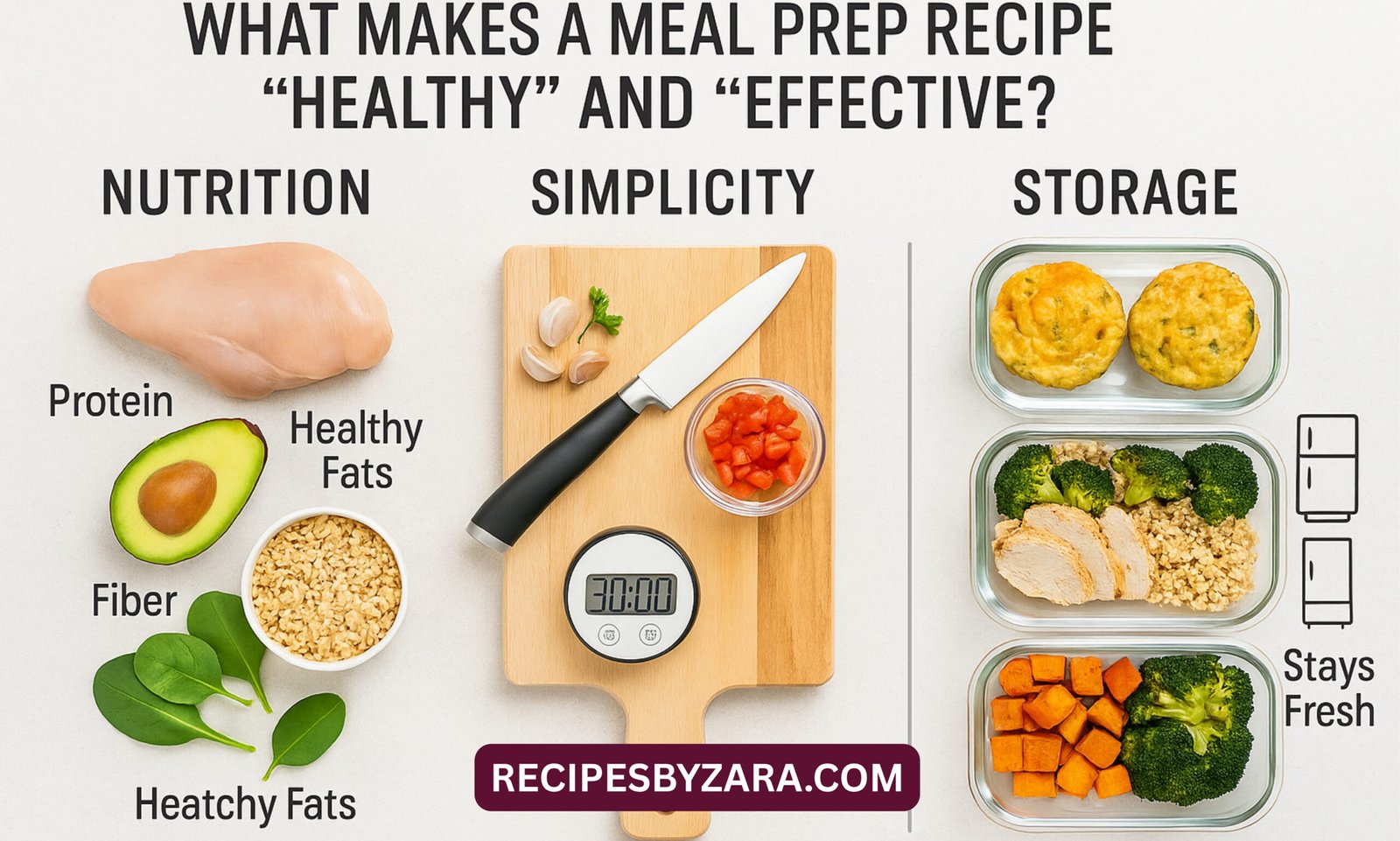
Healthy meals aren’t just about calories, they’re about nutrition. A recipe qualifies as healthy when it includes a balance of lean proteins, whole grains or fiber-rich carbs, and good fats. These combinations help regulate blood sugar, promote satiety, and boost energy levels. All of the 30-minute healthy meal prep recipes that actually work in this article follow those principles.
An effective recipe also needs to be realistic. That means simple ingredients, quick cooking times, and meals that don’t require professional chef skills. The recipes here are built to be done in real kitchens with everyday tools, making them ideal for healthy meal prep for busy people.
Another vital factor is storage. Effective recipes must hold up well in the fridge or freezer, so you can enjoy them over several days. Meals like egg muffins for breakfast, chicken quinoa bowls, and sheet pan dinners maintain flavor and texture even after reheating, making them excellent candidates for weekly prep.
Lastly, variety matters. Repeating the same meal every day can lead to boredom and burnout. These recipes encourage flexibility and rotation, using overlapping ingredients to save money and time without sacrificing taste or nutrition.
2. Must-Have Tools for 30-Minute Prep Success
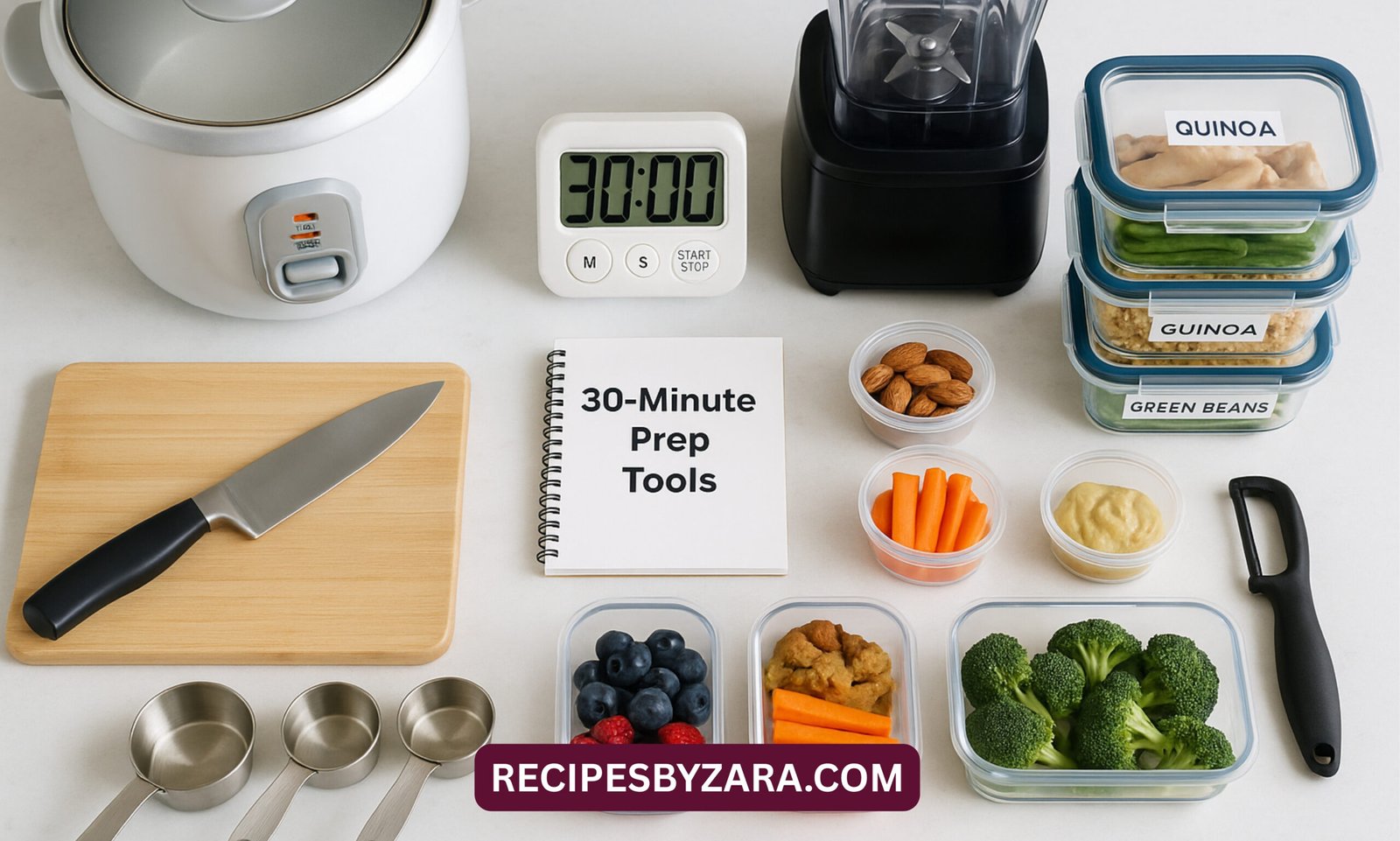
Efficient meal prep starts with the right tools. A few time-saving gadgets can make all the difference in how fast and easy it is to prepare your meals. For example, a rice cooker can cook grains while you chop veggies, and a quality blender handles smoothies, soups, or sauces in seconds. These are essentials for mastering quick and healthy recipes.
Meal prep containers are equally crucial. Choose BPA-free, stackable containers that are microwave- and freezer-safe. Having the right food prep containers helps you portion out meals properly, store them efficiently, and avoid mixing flavors. For snacks, smaller containers keep healthy snacks to prepare fresh and organized.
Organization is another key to shaving minutes off your prep time. Set up your kitchen with a dedicated prep station. Keep your cutting boards, knives, and measuring cups in one area. Label containers clearly to track freshness and meal types. This not only supports better prep habits but also simplifies your Sunday meal prep routine.
When everything you need is within reach, you’ll spend less time scrambling and more time cooking. These tools and practices are vital for executing 30-minute family meals and batch cook in 30 minutes strategies effectively.
3. Planning Smart: How to Prep Multiple Meals in 30 Minutes

Effective planning is at the heart of every successful 30-minute healthy meal prep recipe that actually works. It’s not about making five different meals from scratchit’s about prepping core ingredients that can be mixed and matched throughout the week.
Start with the batch-and-assemble strategy. Cook proteins like chicken, quinoa, or tofu in large batches. While those are cooking, roast veggies or prepare sauces. Assemble your meals from these ready components, which cuts down your active cooking time dramatically.
Use overlapping ingredients to your advantage. For instance, roasted broccoli can be used in both a chicken grain bowl and a teriyaki salmon dinner. Prepping once and using twice is one of the best time-saving tips in efficient cooking strategies.
Create a timeline before you start. Assign 5-minute blocks to each task, such as chopping, cooking, assembling, and packing. Having a plan keeps you on track and allows you to complete your healthy weekly prep plan without rushing or missing steps.
By streamlining your process, you’ll find that prepping even 6–8 meals in 30 minutes is totally doable and sustainable for the long term.
4. 30-Minute Breakfast Meal Prep Recipes
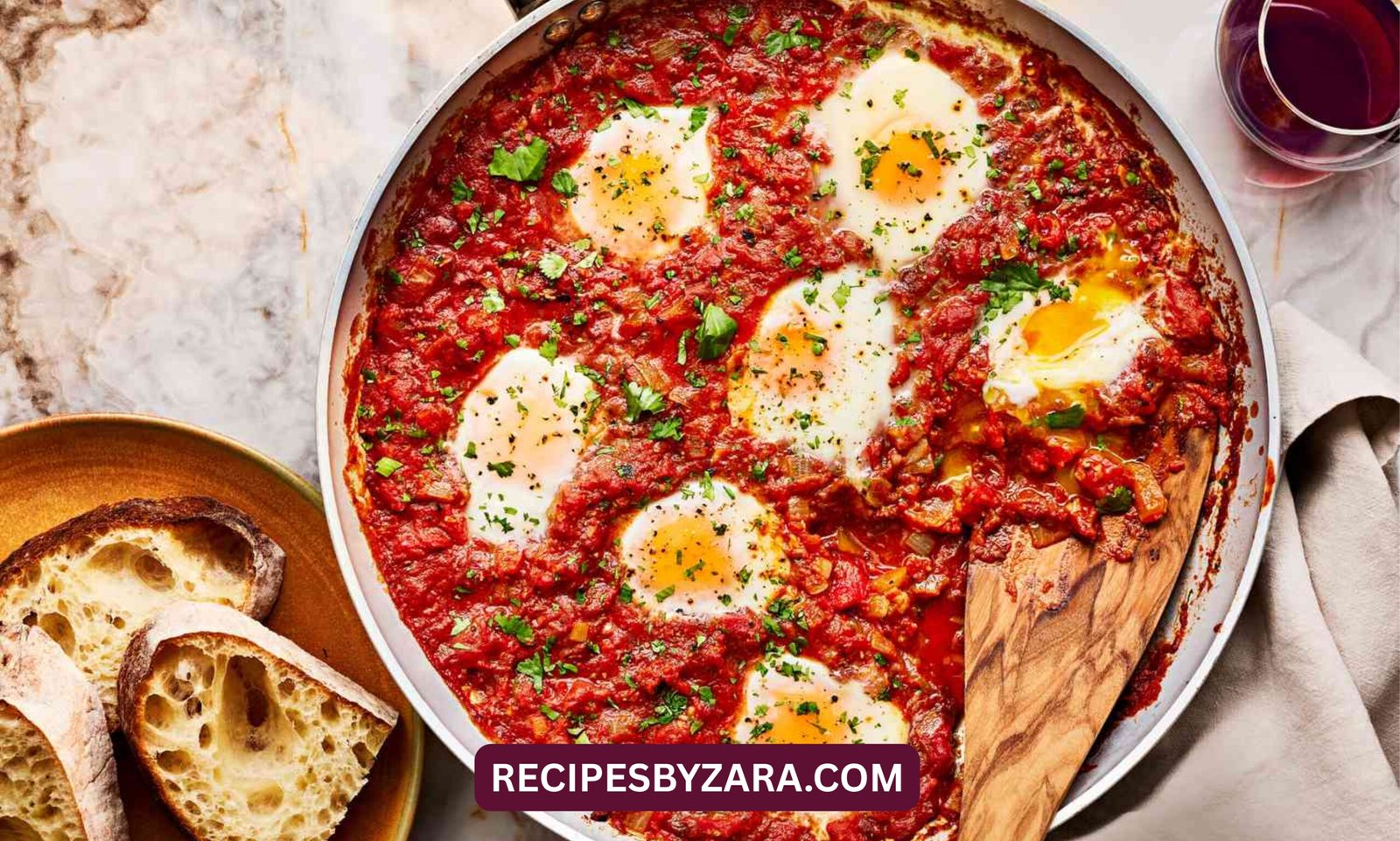
Overnight oats with fruit and nuts are a staple in overnight oats meal prep. Mix rolled oats with milk or a dairy-free alternative, chia seeds, and cinnamon. Top with sliced bananas, berries, or almonds. Let them sit overnight and enjoy a grab-and-go breakfast all week.
Another excellent choice is egg muffins with veggies and cheese. Whisk eggs with chopped bell peppers, spinach, and shredded cheese, then bake in a muffin tin. These egg muffins for breakfast can be stored for up to 4 days in the fridge and are perfect for a high-protein start.
Greek yogurt bowls with chia and berries also make a fast, protein-rich breakfast. Portion out Greek yogurt into containers, top with berries, a spoonful of chia seeds, and a drizzle of honey or nut butter. They’re ideal for those looking for high-fiber lunch prep inspiration too, thanks to their versatility.
All three breakfast options align with no-cook meal prep and are perfect for grab and go meals that support clean eating and consistent energy levels throughout the morning.
5. 30-Minute Lunch Meal Prep Recipes
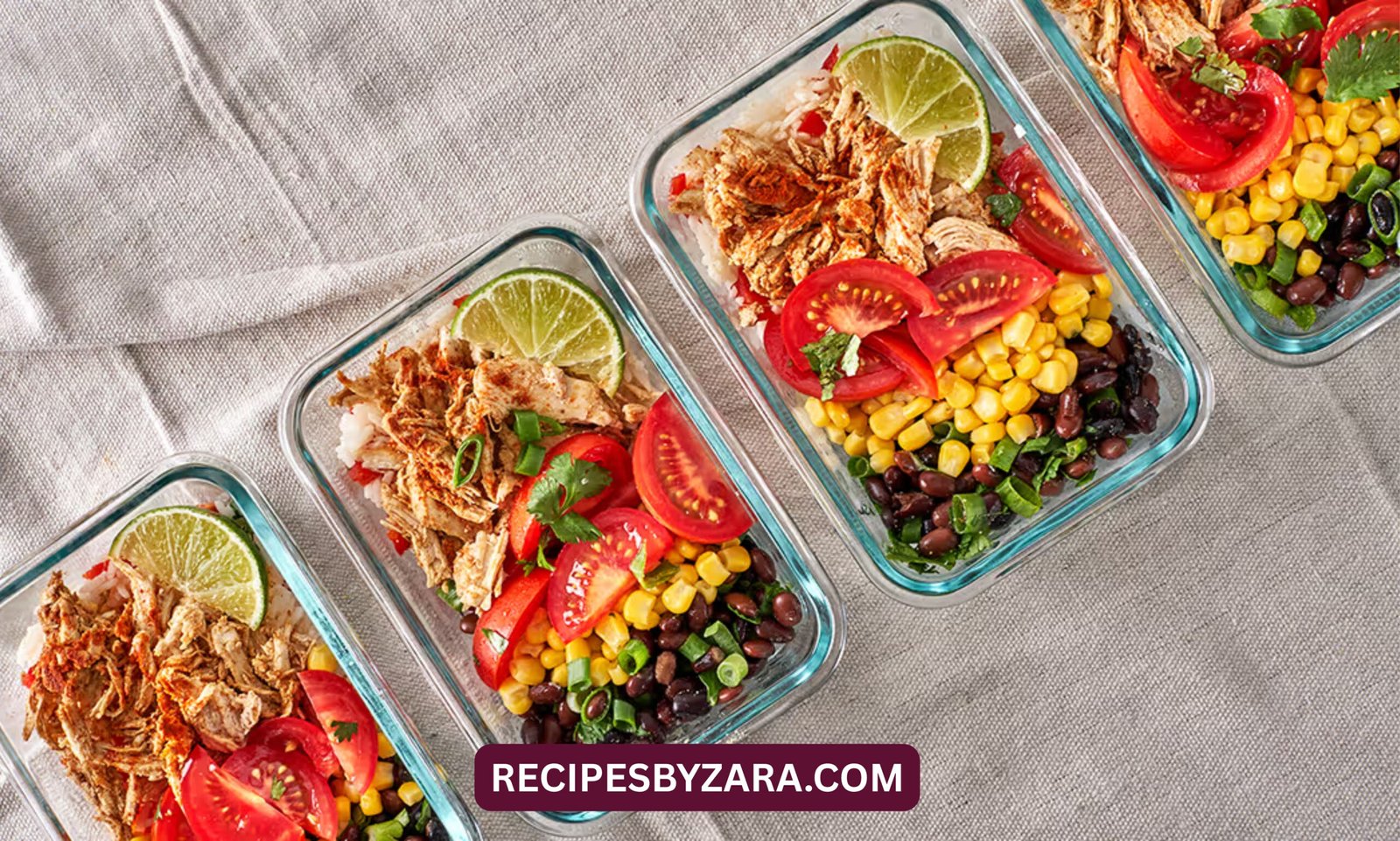
Lunchtime doesn’t have to mean boring sandwiches. Start with chicken quinoa bowls with roasted veggies. Cook quinoa while chicken and vegetables bake on a sheet pan. This recipe is rich in protein, fiber, and color plus it checks the box for balanced meal prep bowls.
For a lighter option, try tuna salad lettuce wraps. Mix canned tuna with Greek yogurt, mustard, chopped celery, and herbs. Scoop into romaine lettuce leaves and serve with a side of baby carrots or a boiled egg. This low-carb meal is perfect for lunchbox prep ideas.
Vegans can enjoy chickpea and spinach power bowls. Sauté chickpeas with garlic and turmeric, then toss with wilted spinach, cooked brown rice, and tahini dressing. These bowls are excellent for plant-based meal prep and provide energy without bloating.
These lunch options are easy to prepare, store well, and align with goals like meal prep for weight loss and clean eating.
6. 30-Minute Dinner Meal Prep Recipes

Dinner is when cravings strike hardest, but your prep work can save the day. Start with teriyaki salmon with brown rice and broccoli. Bake salmon fillets glazed in low-sugar teriyaki sauce while rice cooks in a rice cooker and broccoli roasts. It’s one of the top rice cooker recipes for quick, satisfying meals.
Next up is turkey chili in one pot. Brown ground turkey, then add canned tomatoes, beans, corn, and spices. Simmer for 20 minutes while prepping tomorrow’s meals. This dish is ideal for healthy one-pot meals that feed the whole family.
If you’re vegetarian, opt for a simple stir-fry with tofu and mixed veggies. Cook tofu until golden, then add bell peppers, zucchini, and carrots. Toss with soy sauce and sesame oil for flavor. Serve over rice or cauliflower rice for a low-carb version.
These dinner meals are freezer-friendly meal prep options, ensuring you’re never more than a microwave away from a healthy dinner.
7. 30-Minute Snack and Side Prep Ideas
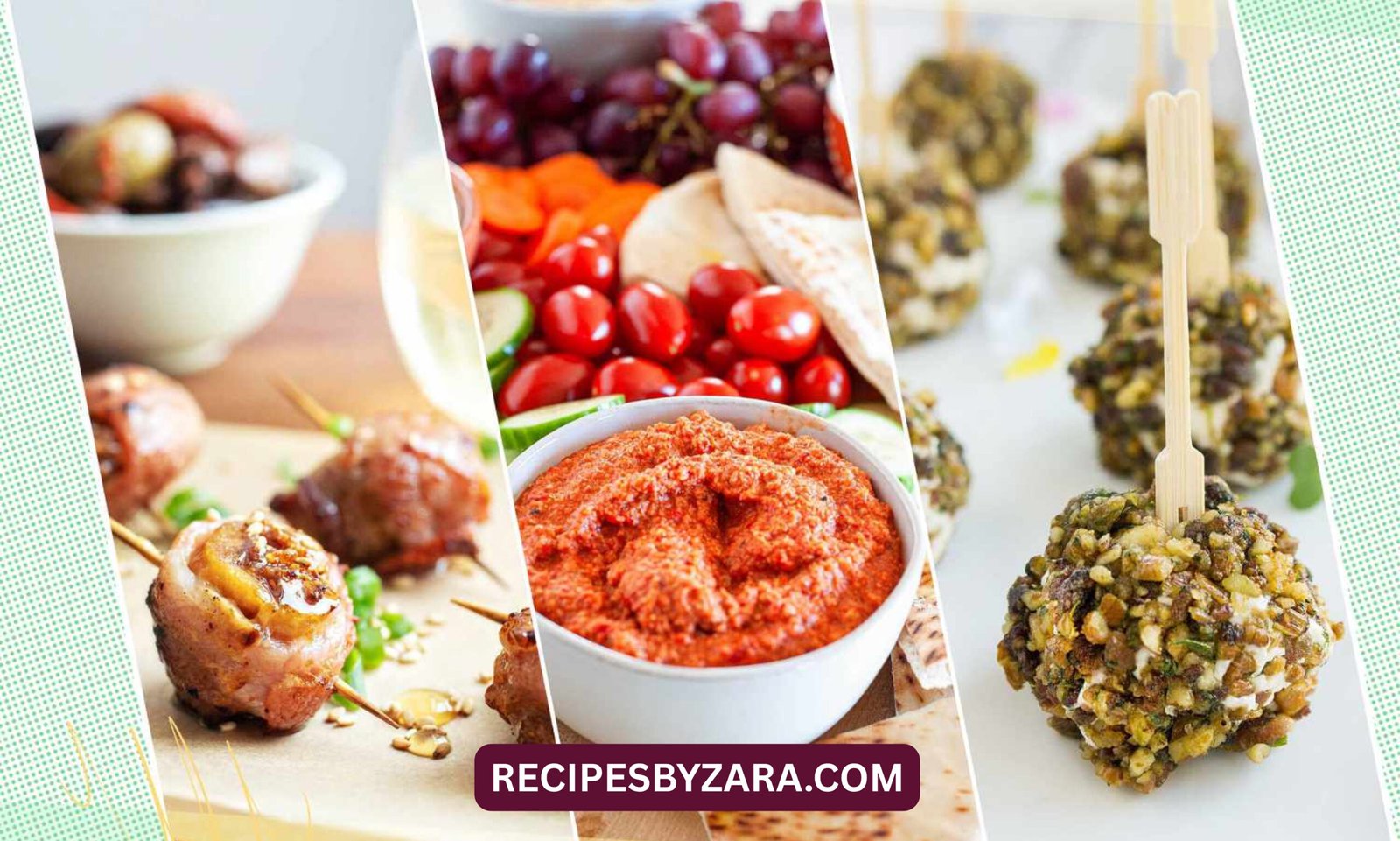
Snacks are essential for keeping hunger at bay and metabolism stable. Start with hummus and veggie boxes. Portion hummus into small cups and pair with sliced cucumbers, carrots, and bell peppers. These are ideal healthy snacks to prepare in advance.
Boiled eggs and mixed nuts make for a powerful protein-and-fat combo. Store eggs peeled or unpeeled in the fridge for up to a week. This snack supports your post-workout meal prep by offering energy and muscle support.
For something sweet, make protein bars or energy balls. Blend oats, peanut butter, protein powder, and a touch of honey. Form into bars or balls and store in the freezer. These are a hit among those following a macro-friendly meals approach.
With these snack options, you won’t be tempted by vending machines or sugar crashes throughout the day.
8. Portioning, Labeling & Storage Tips
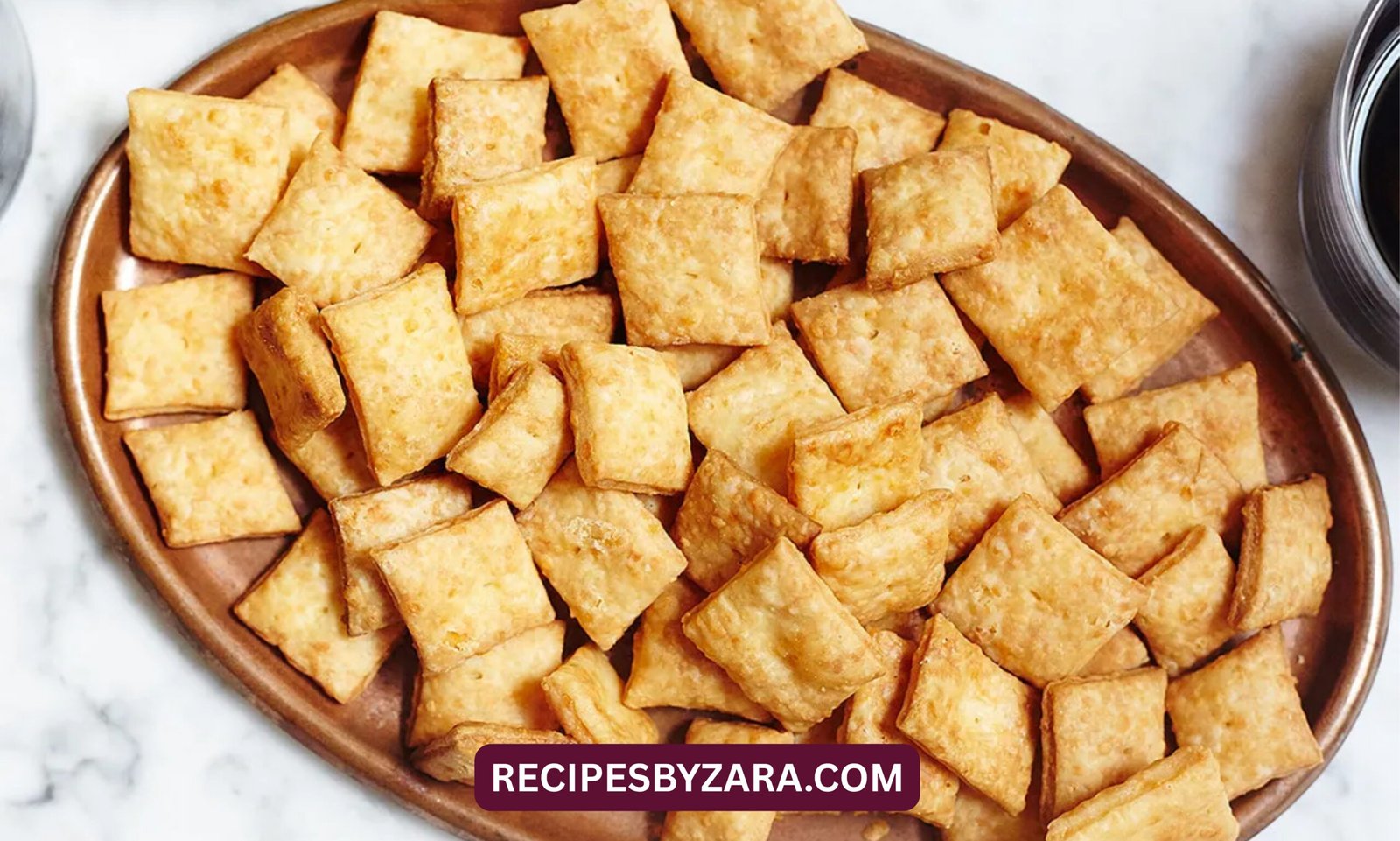
Proper portioning is crucial to prevent overeating and ensure nutritional balance. Use portion control tips such as dividing meals based on protein, fiber, and healthy fat content. Tools like kitchen scales or compartment containers simplify the process.
Label every meal with its name and prep date. This keeps your fridge organized and ensures meals are eaten in the right order. Good fridge organization for meal prep also helps avoid waste and unnecessary grocery trips.
Know how long foods last. Cooked meats stay fresh for 3–4 days, grains for 5, and most veggies for 3. Freeze any meals you won’t eat within that time. This ensures that all your prep and store meals remain safe and tasty.
Sticking to a system helps make make-ahead meals both practical and enjoyable throughout your week.
9. Making Meal Prep Stick: Consistency Over Perfection
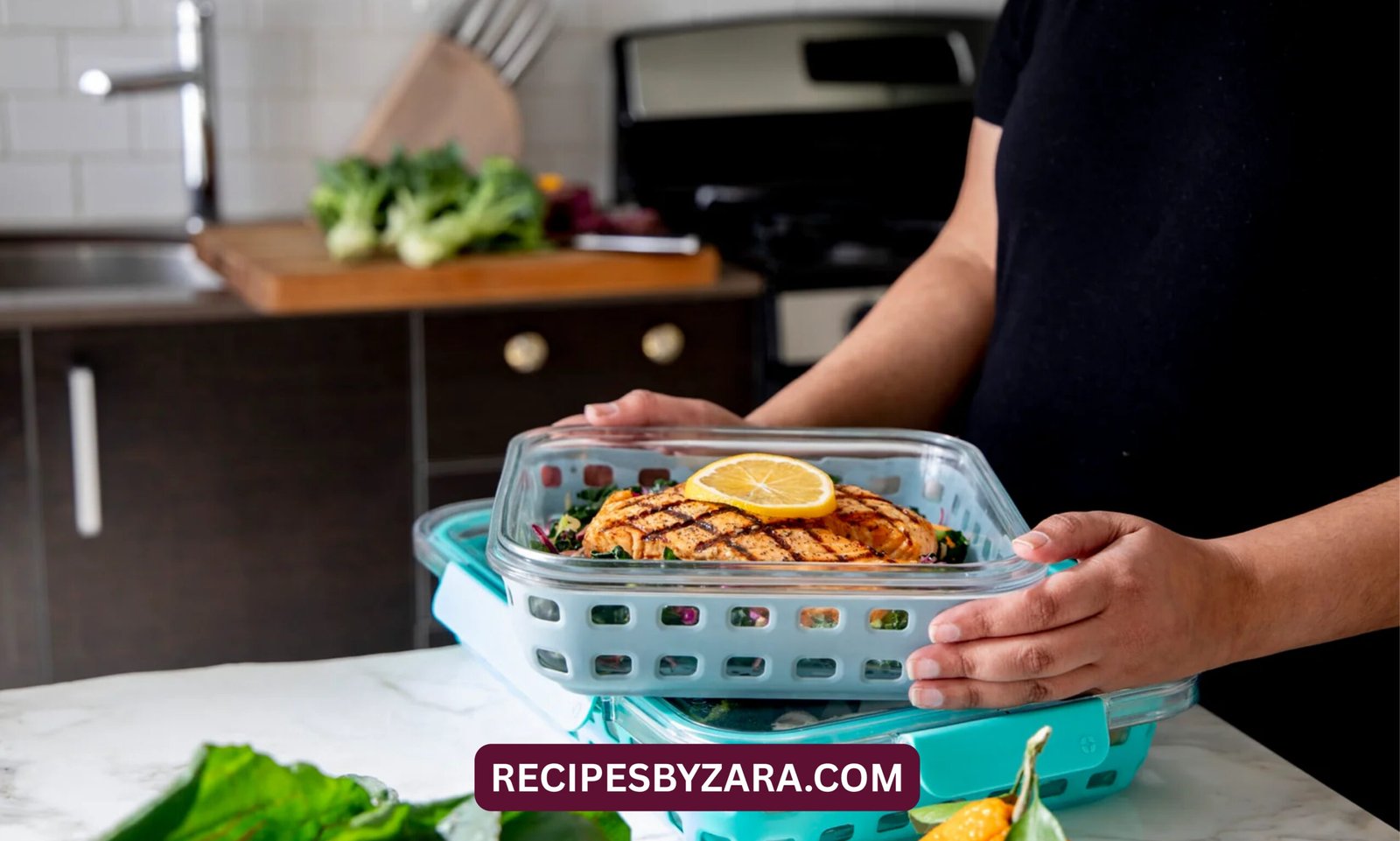
The beauty of 30-minute healthy meal prep recipes that actually work lies in their consistency. You don’t need fancy meals every day, you need meals that get made. Over time, prep becomes second nature, just like brushing your teeth.
Start small. Even prepping 2–3 meals per week makes a difference. Use a meal prep checklist to stay on track and build momentum. Avoid aiming for perfection, focus on creating a doable habit that fits your lifestyle.
Flexibility matters. Adjust your plan for dietary needs like gluten-free meal prep, dairy-free meal prep, or macro tracking. These tweaks ensure your meal prep serves you, not the other way around.
With consistent effort, meal prepping will become one of the most empowering and time-saving tools in your healthy lifestyle arsenal.
Conclusion
Eating healthy doesn’t need to feel like a full-time job. With 30-minute healthy meal prep recipes that actually work, you can feed yourself nutritious, flavorful meals without burning out. These recipes are designed for real life where time is short and energy matters.
By sticking to simple routines, using smart tools, and batching your cooking, you create a system that serves you day after day. From breakfast to snacks to dinner, everything is mapped out and ready to go.
Whether you’re cooking for yourself, your family, or just trying to eat better, this guide gives you the structure and recipes you need. Keep practicing, stay consistent, and your kitchen will become the foundation for your healthiest self.
FAQs
1. Can I really prepare a full week’s worth of meals in 30 minutes?
You can prepare 4–6 complete meals in 30 minutes using batch-cooking techniques. With overlapping ingredients and efficient planning, it’s absolutely possible to get several breakfasts, lunches, or dinners ready within half an hour.
2. How long do prepped meals stay fresh?
Most cooked meals stay fresh for 3–4 days in the refrigerator. Items like salads may only last 2 days unless kept dry. You can extend shelf life by freezing meals like soups, stews, and chili in labeled containers.
3. What are the best containers for fast meal prep?
Look for BPA-free, stackable meal prep containers with tight seals. Use compartment-style containers for portion control tips and clear lids for visibility. Having the right storage is key to successful prep and freshness.
4. Can I freeze 30-minute meal prep recipes?
Yes, many freezer-friendly meal prep meals can be frozen. Cooked proteins, grains, and most vegetables freeze well. Avoid freezing items with high water content like lettuce or cucumbers, which can become soggy when thawed.
5. How do I keep variety in my weekly prep routine?
Use a base ingredient like rice, quinoa, or chicken and switch up the seasonings, veggies, or sauces. Rotating these elements ensures you don’t get bored while still sticking to your healthy weekly prep plan.
